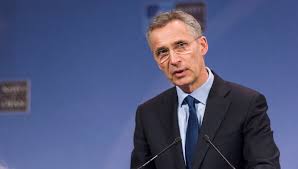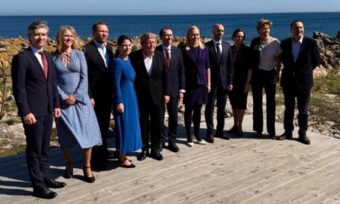
BRUSSELS (AP) — Donald Trump is no longer around as president to berate U.S. allies in Europe and Canada for failing to spend enough on their defense budgets. But the debate about military spending appears likely to continue to rage in NATO, even under President Joe Biden. In an effort to improve “burden sharing” — the way the 30 member countries contribute cash, military hardware and troops to operations run by the world’s biggest security organization — Secretary-General Jens Stoltenberg proposed Wednesday that the allies jointly fund more of NATO’s work.
The plan would mean using a NATO budget to pay for battlegroups of troops on standby in member countries bordering Russia, aerial policing operations, the deployment of warships on permanent maritime duties or military exercises. It would not be used for active military operations outside NATO territory.
“All these (military) capabilities are provided by allies, and those allies that provide those capabilities also cover all the costs. My proposal is that NATO should cover some of those costs,» Stoltenberg told reporters after chairing talks between defense ministers, including new U.S. Defense Secretary Lloyd Austin for the first time.
Spending more together
The former Norwegian prime minister believes that by spending more together, members would also be demonstrating their commitment to defend each other if one comes under attack, which is the common defense clause enshrined in Article 5 of NATO’s founding treaty.
Early in his presidency, Trump stood outside NATO headquarters near a monument dedicated to the 9/11 attacks when the allies rallied to the defense of the United States and suggested that the U.S. might not come to the rescue of partners who fail to spend 2% of GDP on defense. That threat damaged trust within NATO.
The funding would favor countries that do more within NATO, and the U.S. leads a battlegroup in Poland so its costs would be covered under such a budget. NATO members began to cut defense spending after the Cold War but were spurred back into action after Russia annexed Ukraine’s Crimean Peninsula in 2014. Since then, European allies and Canada have together spent an extra $190 billion on their national military budgets, according to Stoltenberg.
Nine of thirty spend two per cent
Nine of the 30 countries are likely to spend the guideline figure of 2% of GDP this year — the U.S., Greece, Britain, Bulgaria, Estonia, Poland, Latvia, Lithuania and Romania — up from three in 2014. U.S. spending has in fact declined since 2014, but the country still spends more than all of its allies combined.
Even with this increased spending and the departure of Trump, America’s partners at NATO expect Biden to be just as demanding about military spending. The tone may have changed, but not the substance of a complaint that has been made by U.S. presidents for well over a decade.



